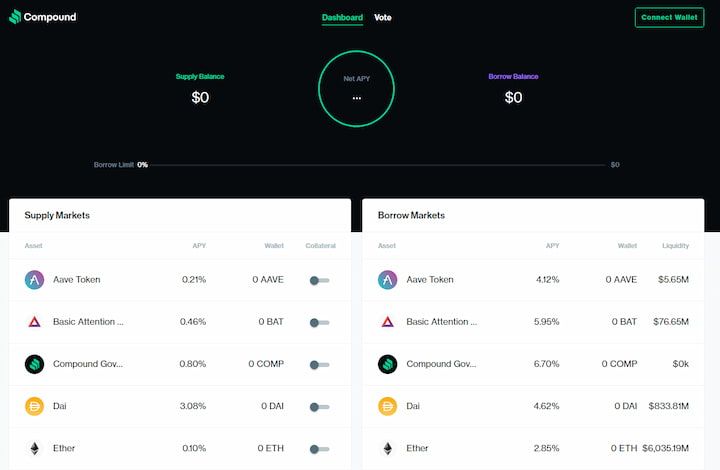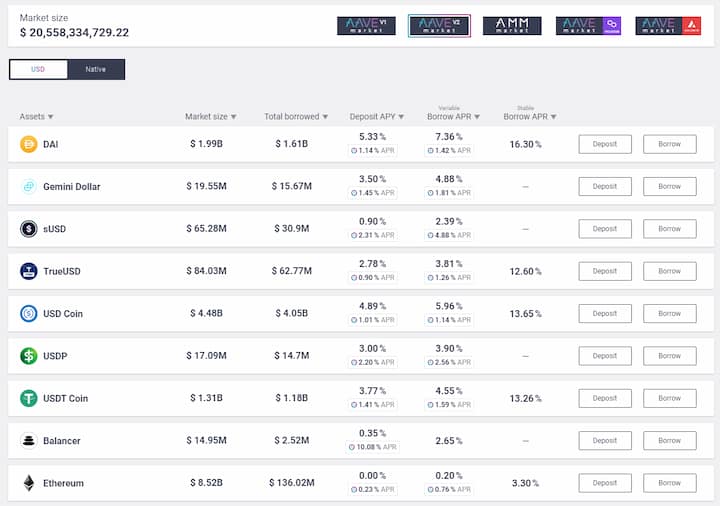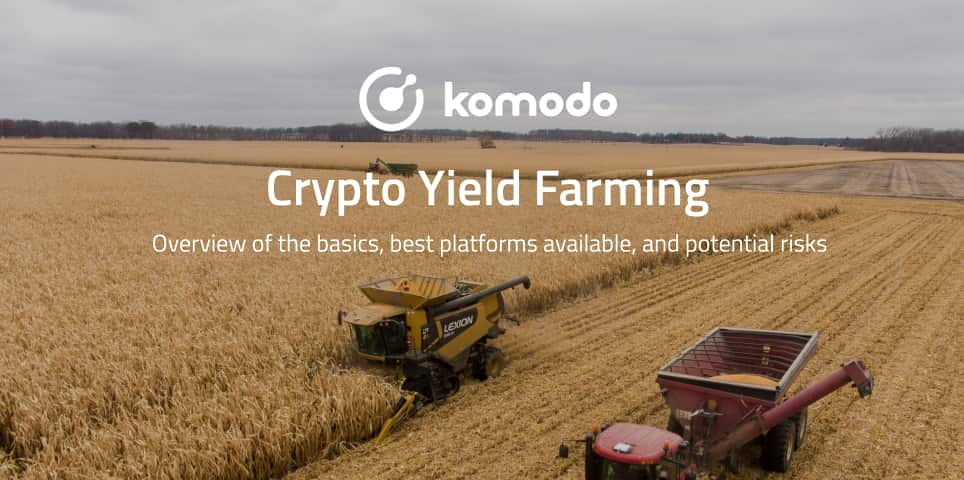This post will break down the basics of yield farming, best yield farming platforms available, and potential risks.
Decentralized finance (DeFi), or the act of moving traditional financial apps to decentralized alternatives on the blockchain, is arguably the biggest movement in the crypto industry. This movement removes the need for an intermediary, such as a bank or other financial company, putting the power in the hands of the users.
Within the DeFi space is a process called yield farming, and it's taking the crypto world by storm. While yield farming can generate quick and above-average returns, it's also a risky space with a ton of nuance to consider before entering.
What Is Yield Farming?
Unlike mining cryptocurrency, yield farming is the process of staking cryptocurrencies to earn interest, also known as yield. The activity is similar to holding money in a savings account to earn interest in the traditional banking space, only yield farming is the decentralized and 'cryptofied' version.
Yet, while banks use customer savings to offer loans and generate interest, they're taking a large cut of that interest and only offering a small amount to the depositing customer. Those funds are then used to pay employees and otherwise support the bank's existence, fleecing the end user out of potential value.
On the other hand, decentralized finance platforms don't have an intermediary to compensate. All funds are provided by the lenders, otherwise known as liquidity providers, and because there's no intermediary, lenders earn much more interest on their crypto compared to what banks offer in fiat.
The Boom of Crypto Yield Farming
Crypto yield farming began to explode once investors discovered the Compound ($COMP) borrowing and lending protocol in mid-2020. Users would stake COMP for the platform to lend out, earning interest on their rewards. Because the initial price of COMP was so low, people flocked to the protocol. An influx of users meant early holders' profits skyrocketed.
Shortly after the Compound boom, investors went looking for the next DeFi yield farming protocol to swarm. From there, protocols like Uniswap and Curve Finance started to gain traction. Yield farming crypto became the 'next big thing' in DeFi for a bit, and it's still quite popular now.

How Does Yield Farming Work?
DeFi platforms ask users to lend their funds to a liquidity pool. Users who do so become liquidity providers, earning yield in the form of the platform's cryptocurrency and interest on any loans taken out using their funds. This dual form of income incentivizes more liquidity providers, strengthening liquidity pools on the platform over time.
For example, lending on a decentralized exchange (DEX) like Uniswap generates interest on the lent cryptocurrency, as well as rewards in the form of UNI. Interest rates vary based on the asset and how much of it one is lending, and rewards are generated based on an annual percentage yield (APY). Some protocols even offer automatically compounding interest calculated via the growing number of tokens in a provider's crypto wallet.
Most DeFi yield farming protocols exist on the Ethereum blockchain, though some protocols are expanding to other networks, like Binance Smart Chain (BSC). That said, other protocols are working to build cross-chain interoperability so that all DeFi platforms can connect and swap.
Most Popular Yield Farming Protocols
Let's highlight a few protocols that have gained widespread adoption thanks to crypto yield farming.
Aave
Founded in 2017, Aave is a decentralized lending protocol that provides rewards in the aToken format. The protocol also has a second token, AAVE, which offers holders discounts and removes fee charges. aTokens offer compounding interest that starts as soon as tokens are held. In October 2021, Aave expanded to introduce yield farming for the Avalanche blockchain network.
Compound
Compound provides what's called an algorithmic autonomous interest rate protocol, which is similar in functionality to a lending pool. The one key difference between this and a traditional lending pool is that Compound adjusts interest rates algorithmically. The algorithm takes into account supply and demand before adjusting prices. Similar to Aave, token holders earn via compounding interest.
Curve Finance
Focusing specifically on stablecoins and Bitcoin trading pairs, Curve Finance offers incredibly low fees compared to other decentralized protocols, which is possible due to the relatively secure nature of stablecoins.
Instadapp
Instadapp connects various DeFi protocols into one platform for accessibility's sake. As a result, users can enjoy interacting with protocols such as Compound and Aave all in one place, managing all of their lending and borrowing from the Instadapp dashboard.
Venus Protocol
While all previously mentioned protocols focus primarily on the Ethereum network, the Venus Protocol exists on Binance Smart Chain. BSC is cheaper and faster than Ethereum due to its smaller userbase and greater centralization — an enticing reason for investors to move networks. The protocol's vToken enables lenders to trade without fees, among other benefits.

The Risks of Yield Farming
While yield farming crypto is an exciting concept, it's a process with quite a bit of risk involved. For one, if there's a new protocol launch, it's entirely possible that the platform is a scam. The group might wait for investors to put in tens of thousands of dollars in crypto, only to enact a rug pull and steal it all. Smart contracts and other blockchain protocols are built by humans, and it's also entirely possible human error has seeped into a platform's code, causing blockchain security issues like an exploit for a bad actor to take advantage of.
There's also no guarantee a token will have any sort of value over time. Many cryptocurrency users complain of the inflation of fiat currencies, but some yield farming currencies dwarf these rates by comparison. Maybe the project is new and exciting but falls off after a while. At that point, the protocol's token can heavily drop in value, causing a loss for many holders. Remember, there's no support team to contact on a blockchain platform, so you're pretty much stuck with the tokens you have at the value dictated by the market.
Becoming a liquidity provider isn't cheap, either. Most protocols require thousands of dollars as an initial investment, plus fees. If an investor chooses a volatile token, they might lose money in the short term. This process is called impermanent loss, though there are ways to mitigate it via online tools.
Yield farming is certainly an industry to keep an eye on. Protocols are ever-evolving, and projects are finally making it out of the Ethereum blockchain to other networks. Whether or not other blockchains take over the yield farming crown is yet to be known, but one thing is for sure — yield farming is here to stay.
📧Komodo Newsletter
If you'd like to learn more about blockchain technology and keep up with Komodo's progress, subscribe to our newsletter. Begin your blockchain journey with Komodo today.

